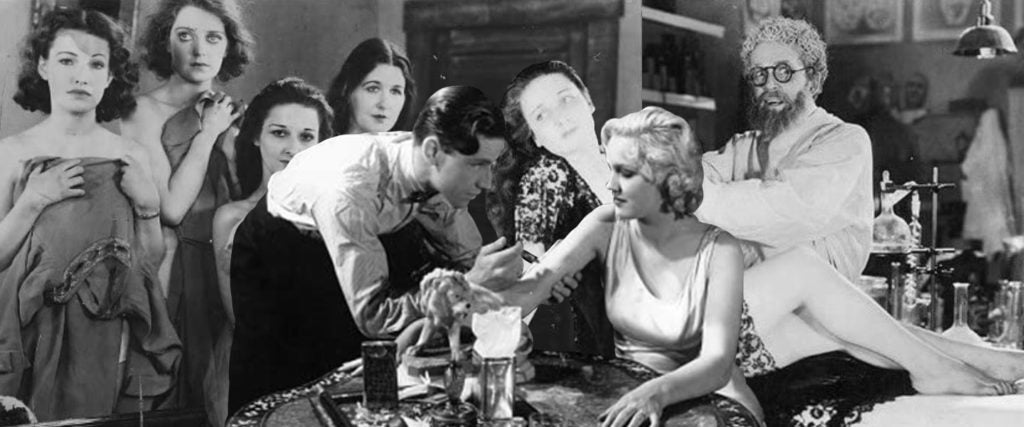Not a lot is known about Hildegarde Esper.
In fact, not a lot is known about the pioneers of exploitation cinema in general, at least compared to their counterparts in the more “traditional” corner of Hollywood: directors, writers, producers and actors who would get profiled in magazines and newspapers, the publicity machines at MGM, Columbia, Warner Bros. and other major studios churning out content with an eye toward legacy. The filmmakers of the “classical” exploitation era — dated from the late teens to the late 1950s — didn’t have time for that. They barely even had time to make movies.
The classical exploitation film is defined by a heady blend of moralism and sleaze. They were, on the face of things, educational pictures designed to inform audiences about taboo subjects like sex, drugs, venereal disease and childbirth. But “Don’t have sex, because you will get pregnant and die” doesn’t get butts in seats as well as good ol’ T&A, so exploitation sold spectacle, luring mid-century moviegoers with promises of the lurid and the obscene. Child Bride, Marihuana, The Devil’s Weed, Sex Madness — the films are rarely what one would call “good.” But they didn’t have to be — the goal was making money.
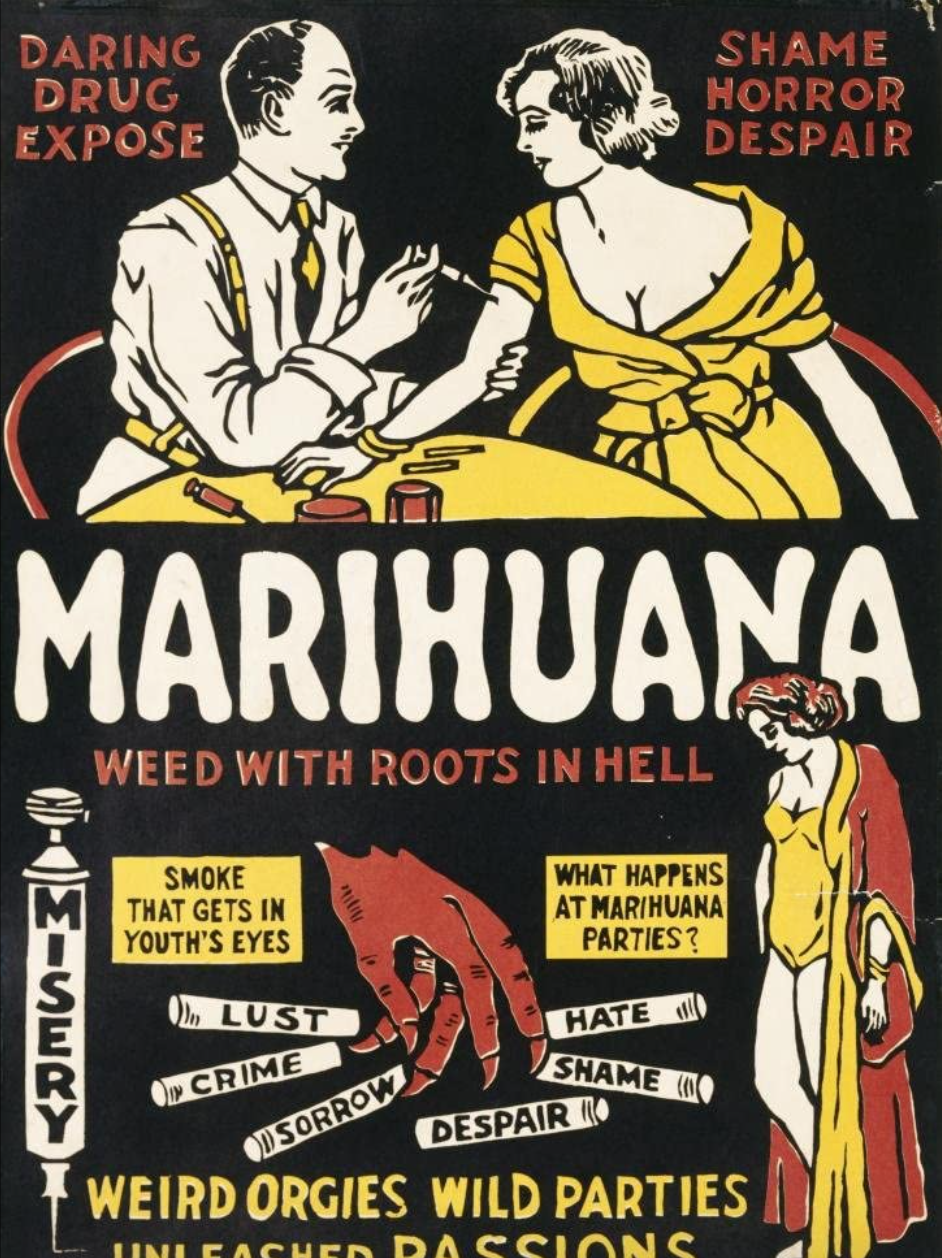
Women have been a key part of the film industry from the very beginning — not just as actresses, but as directors, writers, producers, editors, stuntwomen, you name it. So it was with exploitation cinema, which sometimes saw families and husband-and-wife pairs working together to make films, get them past state censor boards, book them in grindhouse cinemas and market the hell out of them with promises of pre-movie lectures on S-E-X and access to forbidden knowledge. Screenings of Dwain Esper’s Narcotic (1933) were paired with lobby displays purporting to show what real hard drugs looked like. (Police who would demand to examine the displays would be embarrassed to find the drugs moviegoers were gawking at were in reality a lump of sugar or a glob of tar.)
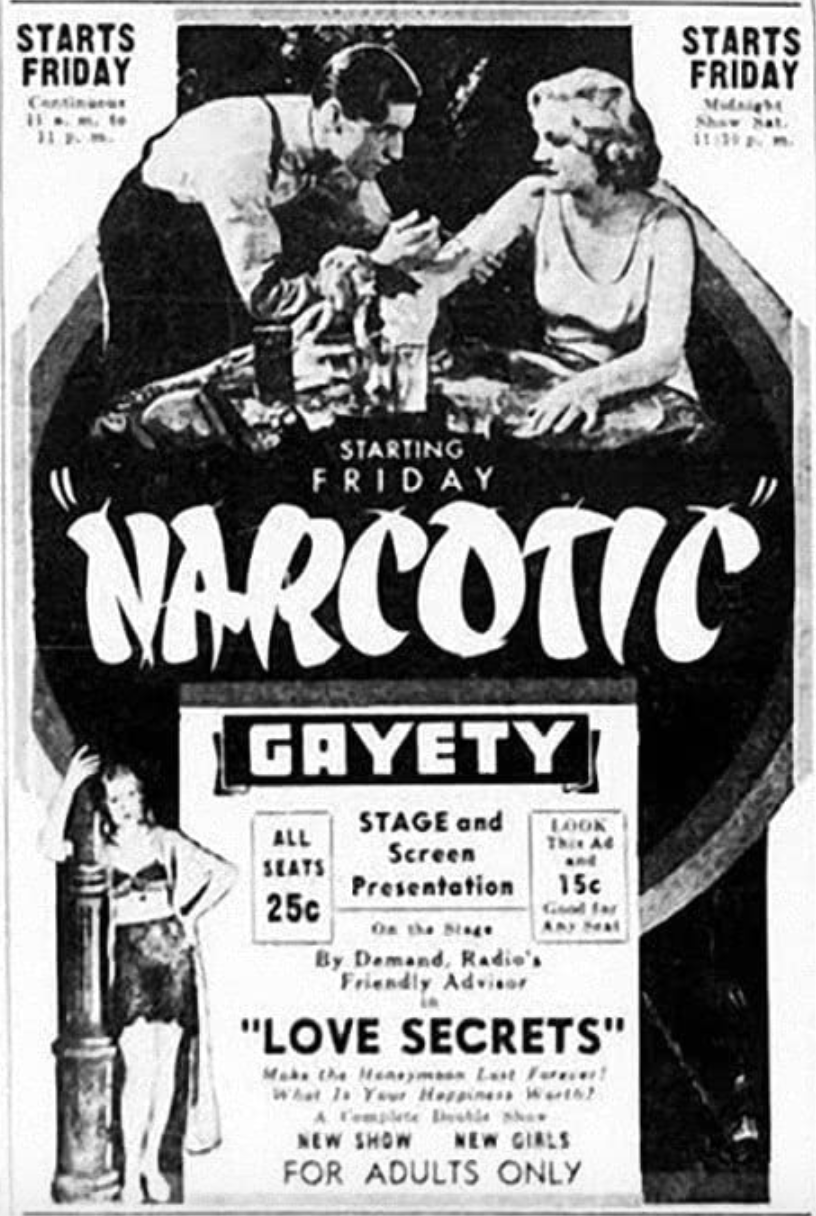
This eye-catching display was made by Hildegarde Esper, who also conceived of the idea for Narcotic — basing it on her uncle, a doctor who became addicted to opiates — and was the principal screenwriter. Per a short 1986 profile in the L.A. Times (one of the scant sources for biographical information on her), Hildegarde Esper née Stadie was born in 1920. When she was eight years old, she “shilled as a snake charmer for an uncle who sold snake oil from the back of a horse-driven wagon.” (All sensationalist details should be taken with a grain of salt, as exploitation filmmakers didn’t mind embellishing the truth or outright lying if it made for a better story.)
At 21, when Esper was a reporter for the Times, she met future husband Dwain, who supposedly made a few B-grade Westerns before getting into the exploitation racket in the late 1920s. Dwain would become a titan of classical exploitation (he directed Narcotic, Marihuana and Sex Madness). His most deliriously WTF film, 1934’s Maniac, features an infamous scene where a man pops out a cat’s eyeball and eats it. He acquired the rights to and distributed 1936’s Reefer Madness, by far the most well-known film of the classical exploitation genre. Dwain was a consummate showman and extremely litigious; Eric Schaefer, who wrote the book on classical exploitation cinema, noted in an interview that fellow exploiteer Dan Sonney was still terrified of being sued by him years after Dwain was already dead.
Through it all, Esper was there — “along for the ride,” says Schaefer, like a lot of women who worked in exploitation cinema. Esper was Dwain’s partner in business as well as in life, serving as the main screenwriter on several of his films and probably making substantial writerly contributions to others. Esper would reach out to medical organizations to find the most accurate scientific knowledge (at the time) on issues like sex and childbirth. She wrote state censor boards to argue that, no, her husband’s films were not “indecent,” “immoral” and “tending to incite [audiences] to crime.” She would develop, create and sell promotional materials, like the sex education pamphlets that were often sold at screenings. So she may have been along for the ride, but the car probably wouldn’t have run nearly so well, if at all, without her.
Esper expert Bret Wood, in his book Marihuana, Motherhood & Madness, writes, “To most, Hildegarde appeared the model wife of their generation: quiet, supportive, and demure.” Sonney called her a “very lovely lady.” Two other anonymous sources who knew Esper went the other way, calling her “a devil… [who] knew how to pull [Dwain’s] strings” and “a snake in the grass.”
There are more questions than answers about Esper’s life — and, in a wider sense, about the role of women in early exploitation filmmaking. No one was much concerned, back then, about keeping behind-the-scenes records of how things were done. There are even fewer contemporary accounts of how women contributed or what they thought about the films they were helping to make — which, though they often exploited women’s bodies, were one of the few sources of frank (albeit biased) sexual education women had access to. Schaefer, who interviewed Esper before her death, thinks that “to a large extent” the PSA-ish elements of her and Dwain’s exploitation films weren’t just a cynical ploy to get scenes of pot-addled young women stripping to their skivvies past the censors, but genuinely held beliefs: That sex before marriage would ruin your life and that “with one puff of weed you’d be on the road to perdition.”
But was Esper often the one to defend the moral fiber of her husband’s films against censors simply because such a defense would sound better coming from a woman? Maybe, says Schaefer. Or maybe wrangling with the censors was put under the umbrella of “secretarial or clerical duties” that naturally a woman would have to do. Or maybe neither; plenty of men wrote censor boards, too. Thus, was Esper a “lovely lady” or a “snake in the grass” — or both?
Exploitation films are by turns viewed as essentially conservative (as argued by Schaefer) or unintentionally, oddly sex-positive, in the sense that they actually acknowledged sex in a way that mainstream films, due to industry censorship, could not. It’s a dichotomy made all the more interesting when you consider the oft-ignored yet undeniable role that women — like Esper or Mildred Horn, film critic and common-law wife of Kroger Babb, whose infamous exploitation picture Mom & Dad she co-wrote — played in it. It’s interesting to imagine the women hovering off-screen when watching, say, Dwain’s 1937 short How to Undress in Front of Your Husband, written by Esper. How to Undress pairs a sensationalist warning about peeping toms with a finger-wagging — at times tongue-in-cheek, at times lascivious — lecture on how the classy, sophisticated woman undresses at the end of the day. Elaine Barrymore, wife of film star John, shows us how it should be done; in one scene, she turns her back to the camera, unhooks her bra and slides down the straps, looking over her bare shoulder and shooting a bright smile at the audience. “To the appreciative, now isn’t a scene like this something… truly… uplifting?” asks the narrator before letting loose a lustful sigh. “Yes, indeed.”
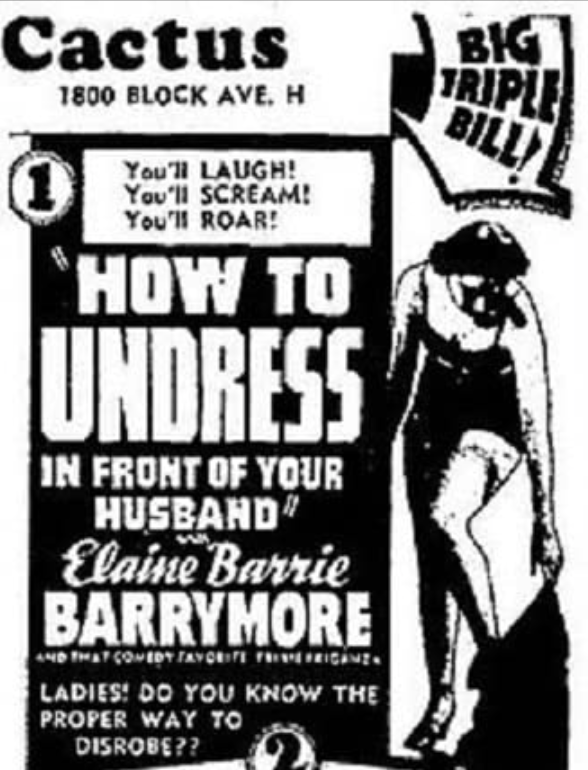
As the 1950s turned into the 1960s, seismic changes in the film industry — most notably the easing of censorship — meant that sex and drugs were no longer overwhelmingly the province of a small group of exploitation filmmakers. The mainstream got more salacious, while the red-headed stepchild that was the exploitation industry gravitated toward a new, bolder way of doing things. Radley Metzger imported “art” films from Europe. Sexploitation and blaxploitation entered the scene. The likes of Russ Meyer and Roger Corman weren’t concerned with presenting their films as educational or moral — people just had to like watching them.
Women were still involved in exploitation, but now they could be directors. Corman, in particular, advanced the careers of several female directors, including Stephanie Rothman, Barbara Peters, Katt Shea and Amy Holden Jones. Exploitation icons Doris Wishman and Roberta Findlay both entered the film industry the same way Esper did — working with male family members — before striking out and becoming directors in their own right. Esper, though it’s possible she helped her husband with his directorial duties, was never credited with directing a film of her own. We don’t know if she would have wanted to. Regardless, considering the minuscule number of female directors from the emergence of talkies through the 1960s, she probably would have been met with considerable resistance had she tried.
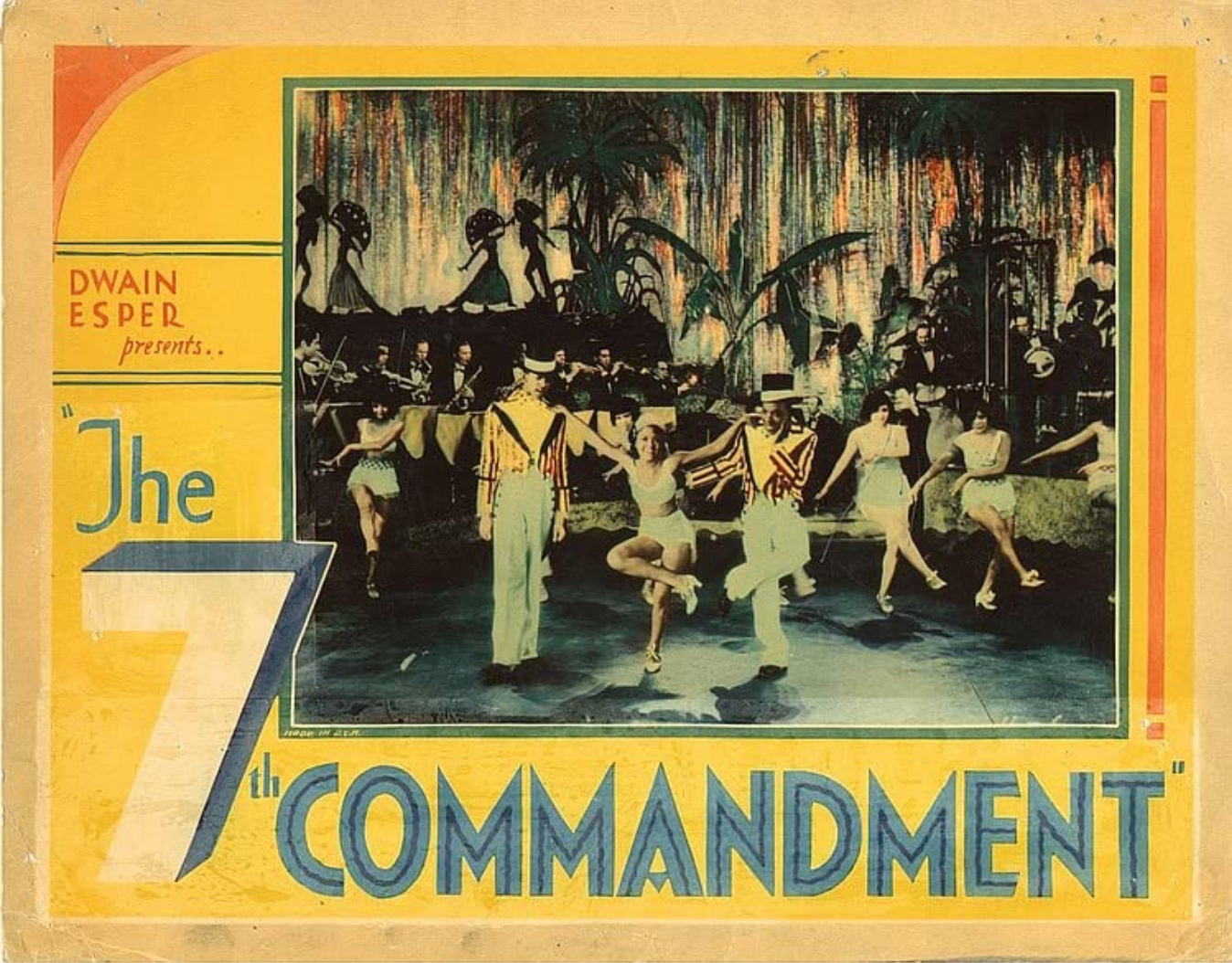
Esper passed away in the early 1990s. Not a lot has been written about her; and so, there’s not a lot of information to pull from. The two of Dwain’s films she probably, per Schaefer’s analysis, had the most to do with — Modern Motherhood (1934) and The Seventh Commandment (1932) — have been lost. (Wrote censorship czar Joseph Breen of the latter film: “It is thoroughly reprehensible in all its details. … The portion of the film given over to the Cesarean operation suggests a foreign picture, possibly a foreign medical picture. The whole thing is very offensive and disgusting.”)
She’s an obscure figure in film history, yet one who provides a template for women who were to come: the behind-the-scenes partner — a Polly Platt or a Marcia Lucas — who kept things going while a man soaked up the credit. Sleaze or mainstream, some things never change.
